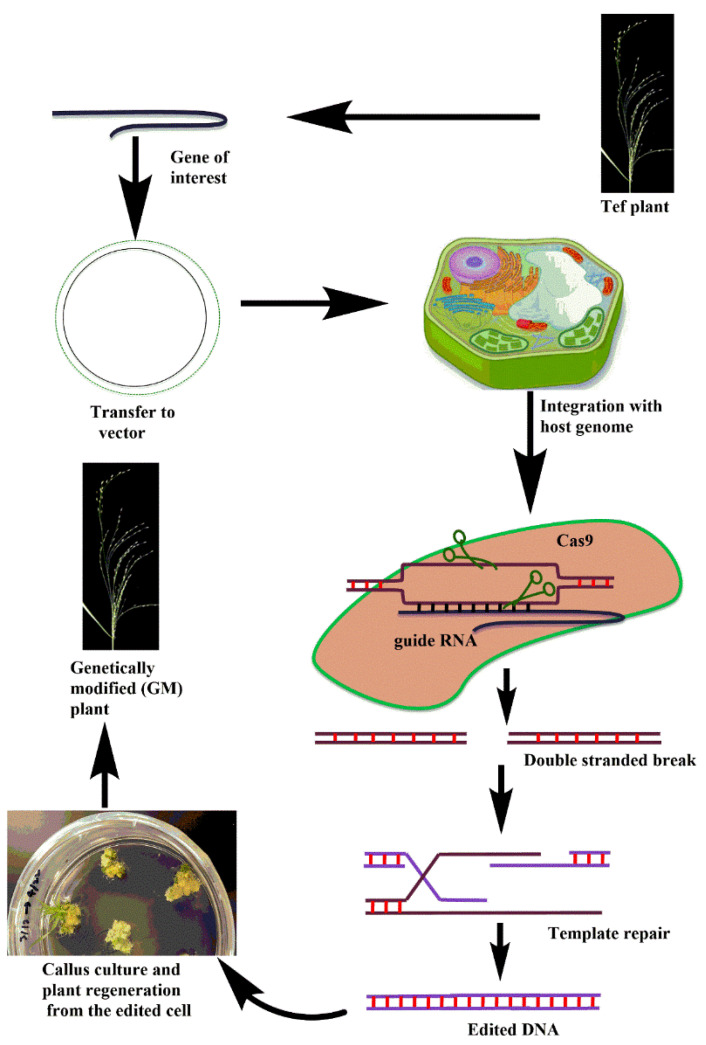Figure 3.
Illustration of the CRISPR-Cas system for tef genome editing. The gene of interest is transferred into a binary vector, which will be transferred into the target tissue (e.g., embryogenic calli) via Agrobacterium transformation, where the CRISPR-Cas protein machinery binds and breaks the double-stranded DNA of the gene of interest. CRISPR-edited lines will be regenerated from rthe callus. (Note: the pictures used in this figure were either taken in the author’s labs or drawn using ChemBioDraw software).

